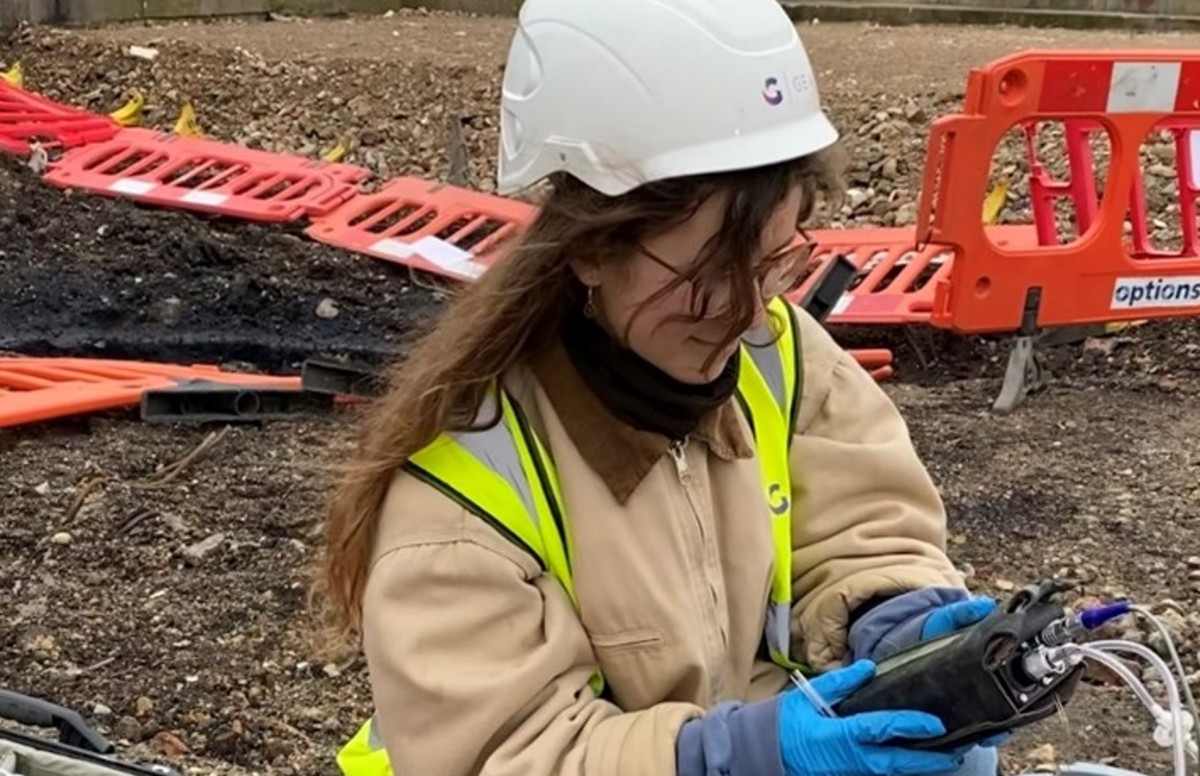The Main Principles Of Geotheta
The Main Principles Of Geotheta
Blog Article
The smart Trick of Geotheta That Nobody is Talking About
Table of ContentsUnknown Facts About GeothetaThe smart Trick of Geotheta That Nobody is Talking AboutGetting The Geotheta To WorkThe Ultimate Guide To GeothetaThe Definitive Guide for Geotheta

They perform website examinations, accumulate examples, execute research laboratory examinations, and evaluate information to review the suitability of the ground for building and construction jobs - Consulting Engineer. Based upon their findings, geotechnical engineers offer recommendations for foundation design, slope stability, preserving frameworks, and mitigation of geotechnical threats. They team up with other professionals, such as architects, architectural engineers, and construction teams, to make certain that geotechnical considerations are integrated right into the general job layout and execution
By analyzing the actions and residential or commercial properties of soil and rock, they can determine possible geotechnical hazards such as landslides, soil settlement, or incline instability. Their experience assists protect against failures or crashes that can jeopardize lives and building. Below are some comprehensive tasks and duties of a geotechnical engineer: Site Investigation: Geotechnical designers conduct site examinations to collect information on subsurface conditions.
They analyze the information to understand the residential or commercial properties and behavior of the dirt and rock, including their strength, leaks in the structure, compaction qualities, and groundwater problems. Geotechnical Evaluation and Style: Geotechnical engineers assess the information accumulated during site investigations to analyze the security and suitability of the website for building and construction tasks. They do geotechnical computations and modeling to review factors such as birthing capability, negotiation, incline security, lateral earth pressures, and groundwater circulation.
Some Known Questions About Geotheta.
Structure Layout: Geotechnical designers play an essential role in creating foundations that can securely support the desired framework. They examine the soil problems and load requirements to determine the suitable structure type, such as superficial structures (e.g., footings), deep structures (e.g (https://www.dreamstime.com/ianhammond2191_info)., stacks), or specialized methods like dirt renovation. They consider elements such as settlement restrictions, birthing ability, and soil-structure communication to establish ideal foundation designs
They examine building and construction plans, display website tasks, and carry out field examinations to confirm that the design recommendations are followed. If unpredicted geotechnical problems arise, they evaluate the situation and offer suggestions for removal or adjustments to the style. Threat Analysis and Reduction: Geotechnical designers examine geotechnical dangers and dangers related to the project website, such as landslides, liquefaction, or soil disintegration.

Collaboration and Interaction: Geotechnical engineers function closely with other professionals associated with a project, such as designers, architectural designers, and construction teams. Effective communication and partnership are essential to integrate geotechnical considerations into the general job style and building procedure. Geotechnical designers give technical competence, answer questions, and guarantee that geotechnical requirements are met.
4 Easy Facts About Geotheta Explained
Right here are some kinds of geotechnical designers: Structure Engineer: Foundation engineers focus on developing and assessing structures for structures. They assess the dirt conditions, load demands, and site characteristics to figure out one of the most ideal structure type and layout, such as shallow foundations, deep foundations, or specialized techniques like stack structures.
They review the variables influencing slope security, such as dirt buildings, groundwater problems, and slope geometry, and develop approaches to stop incline failings and minimize threats. Quake Engineer: Earthquake designers focus on analyzing and making frameworks to endure seismic pressures. They evaluate the seismic hazard of a site, evaluate dirt liquefaction possibility, and create seismic design criteria to ensure the security and strength of structures during quakes.
They carry out field screening, collect examples, and assess the gathered information to identify the soil residential properties, geologic developments, and groundwater conditions at a website. Geotechnical Instrumentation Engineer: Geotechnical instrumentation designers focus on monitoring and determining the actions of soil, rock, and frameworks. They install and maintain instrumentation systems that keep track of variables such as dirt negotiation, groundwater degrees, slope activities, and structural variations to assess efficiency and supply early warnings of potential issues.
Facts About Geotheta Uncovered
They perform examinations such as triaxial examinations, consolidation tests, straight shear tests, and leaks in the structure examinations to gather information for geotechnical analysis and layout. Geosynthetics Designer: Geosynthetics engineers concentrate on the layout and application of geosynthetic products, such as geotextiles, geogrids, and geomembranes. They utilize these products to improve dirt stability, reinforce slopes, offer drainage solutions, and control disintegration.
They often tend to be investigatory people, which indicates they're intellectual, reflective, and analytical. They are curious, methodical, reasonable, analytical, and sensible. Some of them are also social, indicating they're kind, generous, cooperative, individual, caring, useful, understanding, skillful, and friendly - Tailings Engineer.
In the office environment, geotechnical engineers use specialized software devices to perform calculations, develop styles, and analyze data. They prepare records, review job specifications, communicate with customers and staff member, and coordinate project activities. The workplace setting supplies a conducive environment for research, evaluation, and partnership with other professionals associated with the task.
Geotheta Fundamentals Explained
They often go to job sites to carry out website investigations, analyze geotechnical conditions, and gather information for evaluation. These gos to entail taking a trip to different locations, often in remote or challenging terrains. Geotechnical designers may do dirt sampling, conduct examinations, and screen building activities to ensure that the geotechnical facets of the project are being applied properly.
Geotechnical designers also operate in specialized geotechnical research laboratories. In these centers, they conduct experiments, execute examinations on soil and rock samples, and analyze the engineering homes of the products. Geotechnical laboratory designers work extensively in these settings, dealing with testing tools, running tools, and recording data. They team up with various other research laboratory staff to guarantee precise and dependable testing results.
Report this page